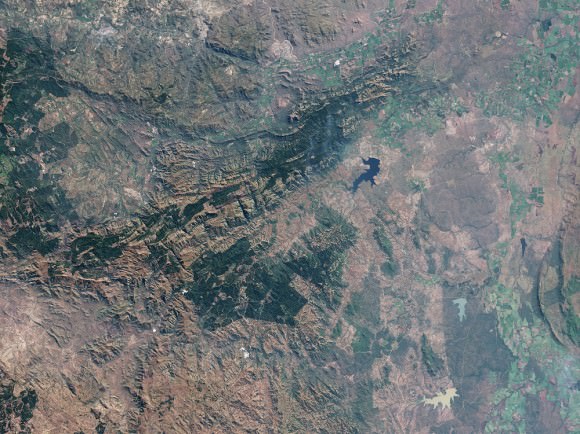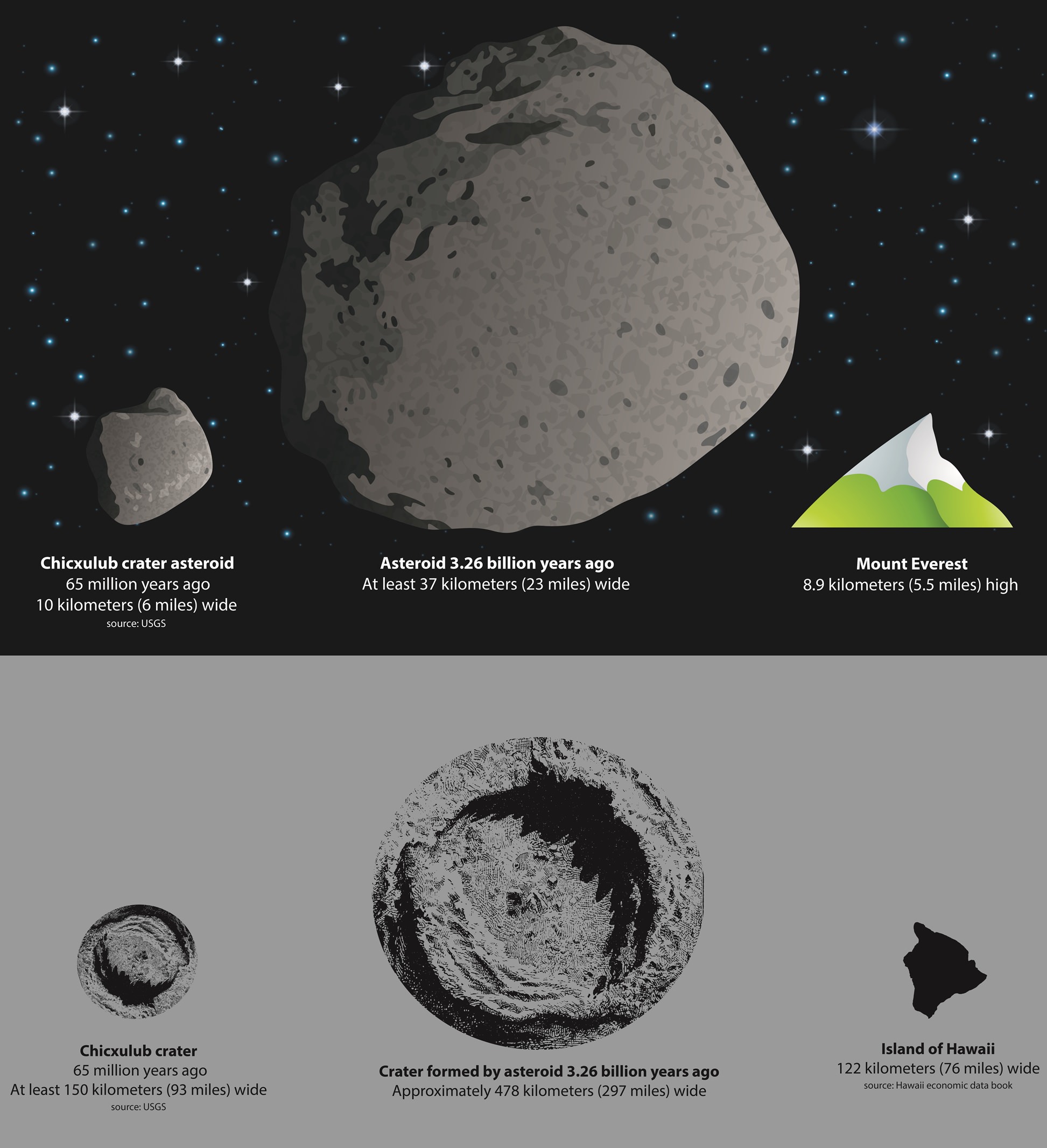Early in Earth’s history, a killer asteroid smashed a hole in our planet about 300 miles (500 kilometers) wide, which is greater than the driving distance between Washington and New York City, a new study says. The space rock set off a cycle of destruction that sounds like your worst nightmares.
That one reported collision 3.26 billion years ago made the Earth tremble, created earthquakes and set off tsunamis that were thousands of meters deep, according to a new research team. The size of this estimated destructor? About 37 kilometers (23 miles) wide, or about three times as wide as the asteroid that killed the dinosaurs 65 million years ago.
“We knew it was big, but we didn’t know how big,” stated co-author Donald Lowe, a geologist at Stanford University and a co-author of the study, of the asteroid.
Evidence of the huge impact — the first one mapped from so long ago — comes from an examination of the Barberton Greenstone Belt in South Africa, which shows rocks and “crustal fractures” that are consistent with the idea of a giant impact, the scientists said. (The asteroid struck the Earth thousands of miles away, but where isn’t known.)

If confirmed, the asteroid could have been one of many that smacked Earth during what is known as the Late Heavy Bombardment period, which pummeled the solar system with debris between 3 billion and 4 billion years ago.
This one event could even have changed the way the Earth formed, the scientists added. For example, it could have been broken up our planet’s crust and tectonics, creating the plate tectonics we are familiar with today.
You can read more about the research in the journal Geochemistry, Geophysics, Geosystems. It was led by Norman Sleep, a geophysicist at Stanford University.
Source: American Geophysical Union


“The size of this estimated destructor? About 297 miles (478 km) wide, or about three times as wide as the asteroid that killed the dinosaurs 65 million years ago.”
No, that’s the crater size. According to the figure, the asteroid was “at least 37 km (23 mi) wide”.
Good catch and a bad mistake for a science reporter, but far worse would be scientists missing actual impacts 478 km Dia and larger according to an alternative hypothesis that suggests that the continental tectonic plates themselves are aqueously-differentiated dwarf planet cores from the extended disk beyond the Kuiper belt, such as Sedna and the recently discovered 2012 VP-113.
PdV heating may mask impact signatures of icy bodies, such as comets, trans-Neptunian objects (TNOs) and dwarf planets by largely clamping the impact shock-wave pressure below the melting point of target-rock silicates due to the greater compressibility of ices. By compressive heating, ice may act as a physical shock absorber. Additionally, hydrocarbon ices may act as a chemical shock absorber, by converting short-chain hydrocarbons to long-chain hydrocarbons, which may explain the origin of petroleum and indirectly coal on Earth (coal, by way of impact debris flows that bulldoze forests ahead of them and then terrestrially lithify within mountain-sized, tsunami-like, terminal debris chevrons). Thus, the circular Michigan basin and the (tectonically-deformed?) Illinois basin may be a pair of simultaneous binary comet or binary TNO impacts and the origin of the Carboniferous Period coal in North America, and if so, then icy-body impacts may merely thump the ground like a deadfall hammer forming basins compared to the ball-peen–hammer like impact of a rocky asteroid that excavates well-known bowl-shaped craters. In icy-body impacts, the relatively gradual release of energy briefly stored in super-compressed ices may sustain the shock-wave duration for many seconds or even minutes for the largest impacts, preventing the target-rock rebound which excavates craters.
Scientists can’t definitively point to a single comet or other icy-body impact on the planet, which must have occurred repeatedly throughout Earth’s history, so categorical denial of alternative hypotheses based on admitted ignorance would be hubris itself.
I’m not sure I understand. Are you suggesting that each individual tectonic plate began life as the core of a different dwarf planet that later collided with the Earth? If so, should we not expect significant chemical and isotopic differences for the tectonic plates?
I think he’s suggesting that post LHB, there may have been an abundunce of icy bodies in our orbital path prior to being pushed out to the TNO belts by the gas giants. These various icy bodies probably had cores of differing mineral content and entry mechanics as they impacted the molten crust. The subsequent cooling with each icy impact began the formation of the lithosphere and the fractured floating land masses (plates); the melted ice forming the oceans as a bonus. The physics involved in this wonderous transformation was what Snowball was describing which sounds like a reasonable scenerio. As a novice I like to speculate so I will suggest the cratons probably formed from the initial icy cores and could explain the their different composition on each of the continents. What a geological “gem” we live on.
Apologies! Error fixed.
Given the distance, presuming that this refers to Washington, D.C., not Washington state. Correct?
The LHB supposedly was over around 3.8 billion years ago. This impact supposedly occurred 500 million years later. Not really LHB era. Glad it did not wipe out life on Earth.
Who knows, maybe it did. For all we know life could have started and been wiped out multiple times in the early history of the Earth. In any case most photosynthetic life would have been wiped out.